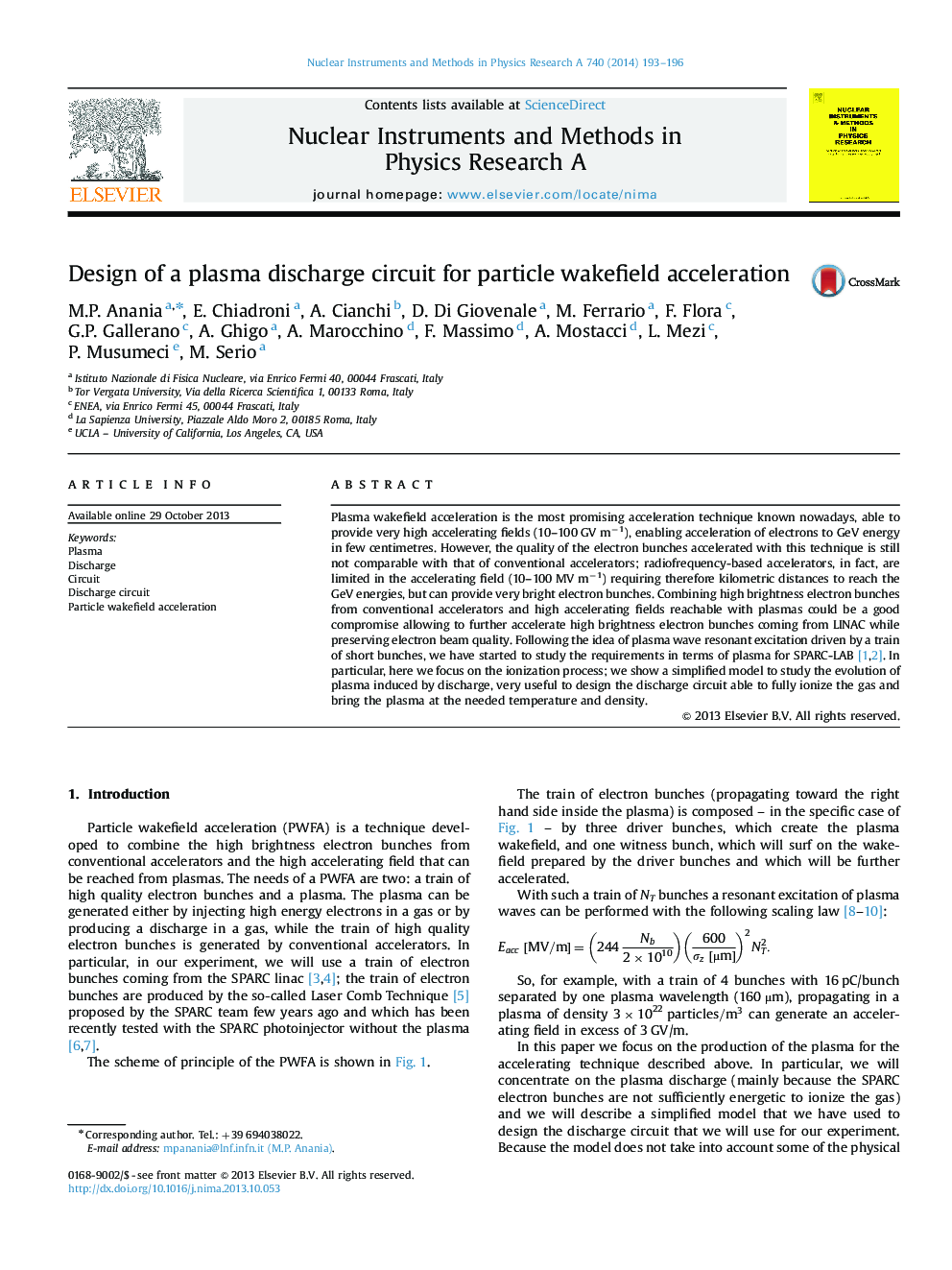| Article ID | Journal | Published Year | Pages | File Type |
|---|---|---|---|---|
| 8177412 | Nuclear Instruments and Methods in Physics Research Section A: Accelerators, Spectrometers, Detectors and Associated Equipment | 2014 | 4 Pages |
Abstract
Plasma wakefield acceleration is the most promising acceleration technique known nowadays, able to provide very high accelerating fields (10-100Â GVÂ mâ1), enabling acceleration of electrons to GeV energy in few centimetres. However, the quality of the electron bunches accelerated with this technique is still not comparable with that of conventional accelerators; radiofrequency-based accelerators, in fact, are limited in the accelerating field (10-100Â MVÂ mâ1) requiring therefore kilometric distances to reach the GeV energies, but can provide very bright electron bunches. Combining high brightness electron bunches from conventional accelerators and high accelerating fields reachable with plasmas could be a good compromise allowing to further accelerate high brightness electron bunches coming from LINAC while preserving electron beam quality. Following the idea of plasma wave resonant excitation driven by a train of short bunches, we have started to study the requirements in terms of plasma for SPARC-LAB [1], [2]. In particular, here we focus on the ionization process; we show a simplified model to study the evolution of plasma induced by discharge, very useful to design the discharge circuit able to fully ionize the gas and bring the plasma at the needed temperature and density.
Related Topics
Physical Sciences and Engineering
Physics and Astronomy
Instrumentation
Authors
M.P. Anania, E. Chiadroni, A. Cianchi, D. Di Giovenale, M. Ferrario, F. Flora, G.P. Gallerano, A. Ghigo, A. Marocchino, F. Massimo, A. Mostacci, L. Mezi, P. Musumeci, M. Serio,
